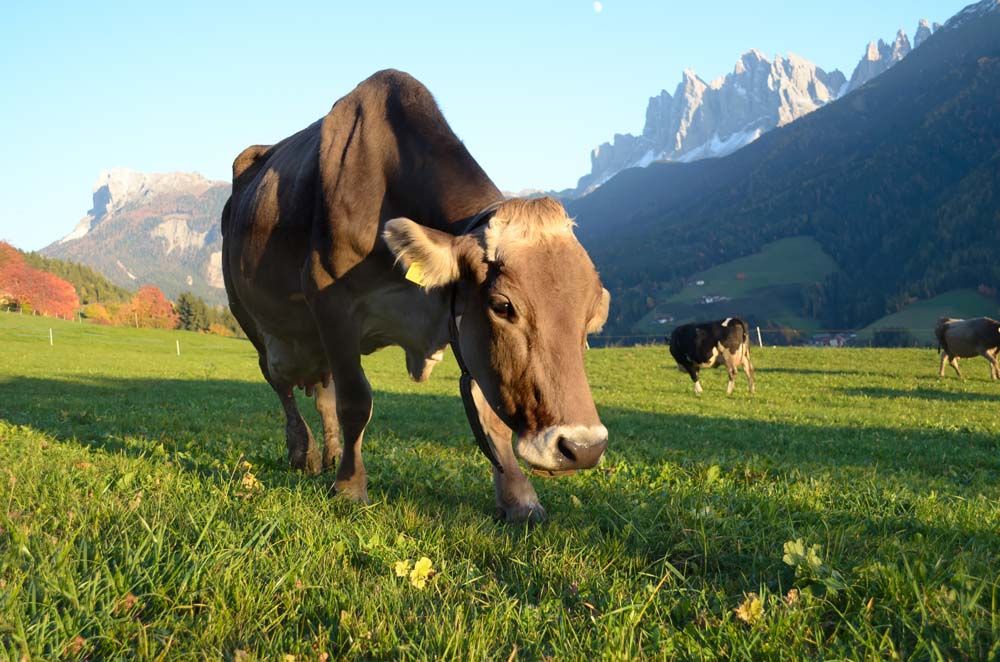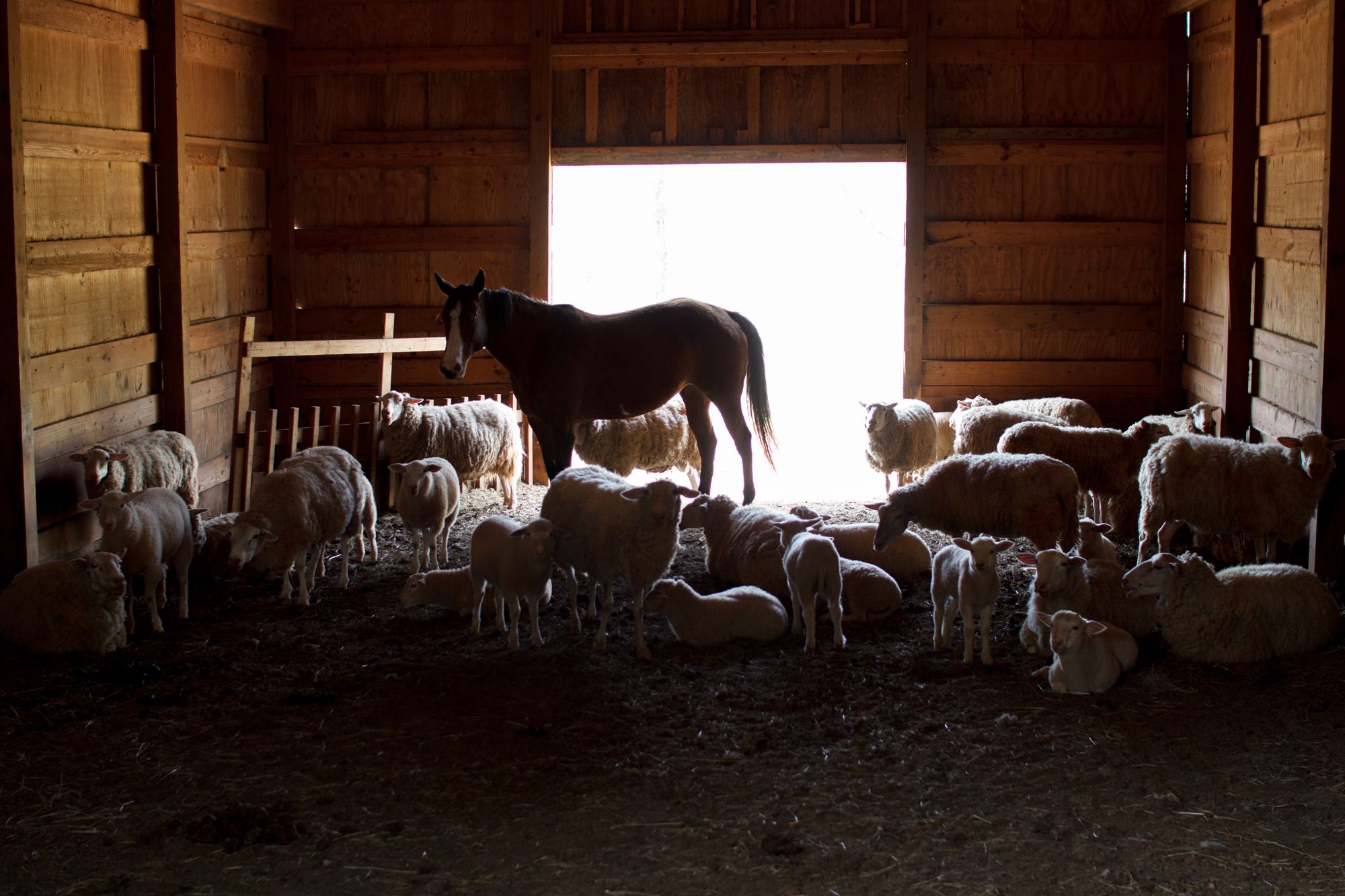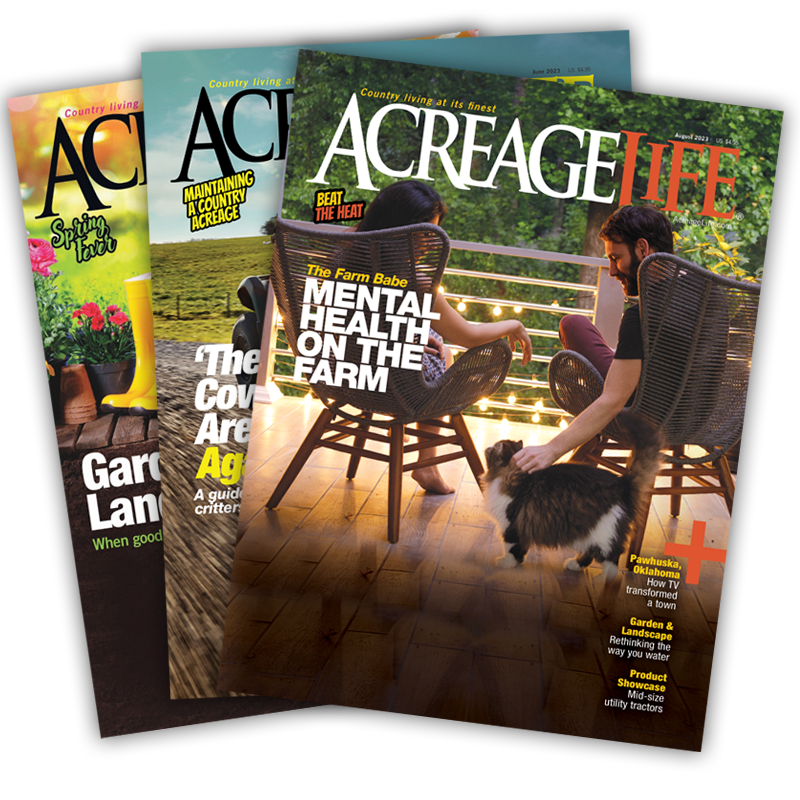Agility Training Keeps Dogs Active and Happy
Turn Your Acreage Into Playtime


Agility is a team sport. Canine and human partners work together, making agility the perfect sport to play in your backyard or pasture to strengthen your bond. Sometimes, dog walks simply get boring for both humans and pups. Even when dogs have two or more acres to enjoy smells for days they need a novel form of enrichment.
Communication with your dog is the primary goal of agility and setting up the course with their personality in mind is fun.
If you live on a farm or have acreage, you can incorporate farm supplies like straw and hay bales as agility “equipment” on the course – and this goes without saying, but you don’t need a Border Collie to play! Any farm dog, small or large, will love agility.
Petrina Firth, owner of The Pet Coach, told AcreageLife that when training backyard dog agility, you’re also building a great bond with your dog, and this type of relationship building means your dog will listen more to you while out on walks or in public.
“You can make a lot of the equipment with farm supplies. I make barrels out of pop-up garden trash bins, and you can use old barrels,” said Firth. “Reactive dogs hugely benefit from having a mental and physical outlet away from stressors, and agility also helps give dogs heaps of confidence while doing something they love.”
Benefits of Agility Training for Dogs and Owners
Backyard agility is like recess for your buddy. Many working breeds thrive on this activity, and all dogs need mental stimulation. Dogs learn confidence, assurance and self-reliance as they figure out how to jump on a hay bale, navigate through a tunnel or bounce through a series of jumps.
Customizable and expandable courses
Owning acreage means you can continuously upgrade and modify your obstacles without being limited by space. You can add new elements or increase difficulty as your dog masters each challenge.
Stress relief for dogs and livestock
Dogs that spend energy on agility training may be less likely to engage in unwanted behaviors, such as chasing livestock or digging holes. Agility provides a positive outlet for their energy while keeping them mentally engaged.
Multiple dog-friendly areas
If you have more than one dog, a farm allows for separate practice zones or the setup of different course variations so all your pets can train without interference.
Ample space for creativity
Farms and acreages provide plenty of open space to design a large, customized agility course. You can adjust the layout to include longer runs, more jumps or unique obstacle arrangements that aren’t restricted by the constraints of a small backyard.
Cost-effective solutions:
With access to farm supplies such as wooden planks, fence posts, hay bales and PVC pipes, budget-friendly obstacles can be created. Repurposing materials you already own saves money while reducing waste.
Sabrina Kong, DVM and CCPDT Certified Dog Trainer, explains that farm supplies are a goldmine for do-it-yourself (DIY) agility courses because they’re sturdy, affordable and you can often repurpose materials already on hand.
“For example, I’ve used cattle panels (secured between T-posts) as adjustable weave poles and wooden pallets as elevated platforms for ‘pause tables.’ These items withstand weather and rough play, making them ideal for rural settings where durability matters.”
“One of my favorite setups involves hay bales as jumps or tunnels. They’re soft on paws, adjustable in height and encourage dogs to navigate obstacles without the intimidation of rigid equipment,” said Sabrina Kong.
DIY Backyard Agility Obstacles
Building your own backyard agility course is affordable and fun with a little creativity and some common farm supplies. You can repurpose materials to create jumps, contact obstacles, seesaws and weave poles, helping your dog stay active while training for agility events. Always choose materials that are pet-safe and weather-resistant, as well as regularly inspect obstacles for wear and tear to avoid injuries.
Jumps
These help dogs improve coordination, balance and strength and are perfect for standard courses.
PVC Pipes or Wooden Poles: Use lightweight PVC pipes or wooden dowels as crossbars for jumps. Secure them between two upright buckets filled with sand or gravel for stability.
Cinder Blocks: Stack cinder blocks and place a wooden pole across the top. This setup is adjustable by adding or removing blocks to change the height.
Baling Twine or Rope: For a simple setup, stretch baling twine or rope between two sturdy posts to form a low jump.
Weave Poles
Weave poles emphasize tight control and responsiveness.
Garden Stakes or Fence Posts: Use lightweight garden stakes or fence posts as weave poles. Space them 18- to 24 inches apart and anchor them securely into the ground.
PVC Pipes with Fittings: Cut PVC pipes to equal lengths and place them in simple bases made from PVC T-joints. This allows for easy repositioning.
Tunnels
These encourage flexibility, focus and bravery. Tunnels are always a favorite for dogs of all sizes! Encourage your dog to explore the tunnel by luring with treats or toys.
Large flexible drainage pipes: Use stakes or bricks to secure the tunnel in place.
Setting up your tunnel: Lay the drainage pipe in a straight or curved line and secure the ends using stakes or bricks to prevent movement.
Upcycling farm supplies allows you to create a fun, low-cost agility course that strengthens your bond with your dog. Plus, these DIY projects allow you to customize the design to suit your dog’s skill level and backyard space.
Tags:Country Critters

Acreage Life is part of the Catalyst Communications Network publication family.














